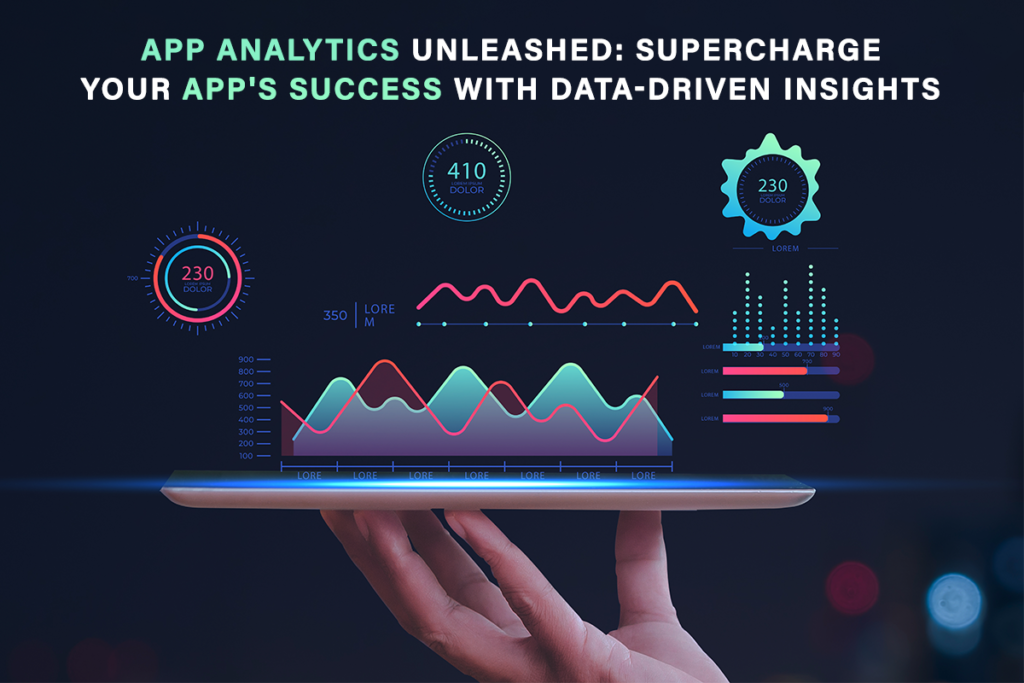
Understanding, Analyzing, and Utilizing App Analytics Data
Introduction
In today’s data-driven world, app analytics data plays a crucial role in understanding user behavior, optimizing app performance, and making informed business decisions. By effectively understanding, analyzing, and utilizing app analytics data, app developers and business owners can gain valuable insights into user engagement, conversion rates, and overall app success. This article aims to guide you through the process of leveraging app analytics data to unlock its full potential and drive meaningful improvements in your app’s performance.
I. Importance of App Analytics Data:
a. Understanding User Behavior
- App analytics data provides insights into how users interact with your app, including their in-app actions, session durations, and feature usage. This understanding allows you to make data-driven decisions for enhancing user experience and satisfaction.
- Identifying Drop-off Points: Analytics data helps identify areas where users drop off or face difficulties within your app, allowing you to address those pain points and optimize the user journey.
b. Improving App Performance
- App analytics data provides key metrics such as crash reports, load times, and network requests, enabling you to identify performance bottlenecks and optimize your app’s technical aspects.
- Tracking App Updates: Analyzing data post-app updates allows you to assess the impact of changes, feature enhancements, or bug fixes, helping you make iterative improvements.
II. Types of App Analytics Data
a. User Acquisition Metrics
- Track metrics such as downloads, installs, and user sources to gain insights into the effectiveness of your user acquisition campaigns and channels.
- Analyze user acquisition costs (CAC) and customer lifetime value (CLV) to evaluate the ROI of your marketing efforts.
b. Engagement Metrics
- Analyze metrics like active users, session durations, and screen views to assess user engagement levels and identify opportunities for increasing user retention.
- Monitor user actions, such as in-app purchases, social sharing, or feature usage, to understand user preferences and behaviors.
c. Conversion Metrics
- Measure conversion metrics, including app registrations, subscriptions, or completed transactions, to evaluate the effectiveness of your conversion funnel.
- Identify conversion drop-offs or points of friction to optimize your app’s conversion rates and increase revenue opportunities.
III. Analyzing App Analytics Data
a. Define Key Performance Indicators (KPIs)
- Determine the KPIs that align with your app’s goals and objectives, such as daily active users (DAU), retention rate, average revenue per user (ARPU), or user churn rate.
- Set benchmarks and goals for each KPI to monitor progress and measure success.
b. Utilize Data Visualization Tools
- Leverage data visualization tools to transform raw analytics data into meaningful charts, graphs, or dashboards. This visual representation makes it easier to identify trends, patterns, and anomalies.
c. Perform Cohort Analysis
- Conduct cohort analysis to track user behavior over time, comparing groups of users who joined your app within the same time frame. This analysis helps assess user retention, engagement, and conversion rates for specific cohorts.
IV. Utilizing App Analytics Data
a. Iterative App Improvements
- Use analytics data to inform iterative improvements in your app’s features, UI/UX, and overall user experience. Address pain points, optimize workflows, and introduce new features based on user feedback and analytics insights.
b. Personalization and Targeted Campaigns
- Leverage app analytics data to create personalized user experiences and targeted marketing campaigns. Segment users based on their behaviors, preferences, or engagement levels, and deliver tailored content or promotions to increase conversions.
c. A/B Testing and Optimization
- Utilize A/B testing to compare different variations of app elements, such as layouts, copywriting, or button placement, to identify the most effective configurations.
- Optimize app performance based on A/B testing results, ensuring continuous improvements aligned with user preferences and behaviors.
Conclusion
App analytics data is a goldmine of insights that can drive informed decision-making and unlock the full potential of your mobile app. By understanding, analyzing, and utilizing app analytics data effectively, you can gain valuable insights into user behavior, optimize app performance, and drive meaningful improvements. Embrace the power of data-driven decision-making to stay ahead in the competitive app market and deliver exceptional user experiences.
Please feel free to Contact Us in case you need any guidance regarding your app marketing needs.




0